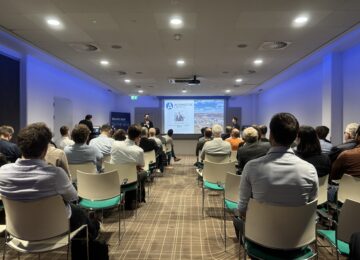Social prioritization: what does it mean for energy storage?
As of this week, the social prioritization framework went into effect. From now on, grid operators must first make available the transport capacity that becomes available to so-called "congestion relievers": parties that provide additional capacity on the grid. Energy storage that demonstrably reduces grid congestion falls into that category and can be notify the grid operator to obtain this status.
To better understand the impact of "social prioritization" for energy storage and how it works practically, we sat down with Eric Woittiez, Consultant Strategy & Innovation at Liander, and responsible within Netbeheer Nederland for large-scale storage.
1. This week goes into social prioritization: what specifically is going to change?
The most concrete change is that as of October 1, our customers can submit a so-called prioritization request. The grid operator will then work to assess whether the prioritization request can be honored. This applies to the categories of congestion relievers (e.g. storage, CHPs), security (e.g. fire department, police) and basic needs (e.g. education, water). Social prioritization applies only in congested areas met a waiting list.
2. Energy storage can be touted as congestion reliever. What advantages does this offer?
As a result of the prioritization request, projects may move up the waiting list. By the way, this does not mean that a project can then be connected immediately. Social prioritization is primarily about reordering the queue. However, it does move you up the list. This means that if there is room, you, as a congestion reliever, will have an earlier turn for a new or heavier connection.
3. What must market participants meet to be a congestion mitigator?
The basic criteria for congestion relief are as follows:
- You are on the waiting list and can make a significant contribution to reducing congestion. If you do not worsen congestion but also do not reduce it, you are not a congestion reliever.
- Our technical analysis must show that you do not cause an increase in congestion at other times and/or in another grid operator's grid.
- There is a minimum amount for reducing the congestion peak during the congestion period. If you are connected to our grid, this is 1,000 kW. If you are connected directly to TenneT's high-voltage grid, the minimum is 10,000 kW.
- You can mitigate congestion by deploying transmission capacity in the direction other than the congestion problem. This can be either offtake or feed-in to the grid.
4. What does the assessment procedure of a congestion softener look like? And what considerations does the grid operator make in this process?
Under certain conditions, batteries can be used as congestion relievers. This depends on several factors. The grid operators will enter into discussions with a customer upon application to discuss under what conditions, this may take some time, as battery operation must be tailored to the customer and the local situation. In areas where TenneT also has or expects congestion on the high-voltage grid, TenneT will also assess your application and may have to agree to additional requirements.
5. Next, if you are actually assessed as a congestion mitigator, what does the follow-up process look like? How long does it then take for you to be connected?
Making a prioritization request has been possible since Oct. 1. Prioritization is only about power released in congestion areas and is independent of when you get the connection. The grid operators will handle the requests. Because storage as congestion mitigation requires customization, you should expect long lead times.
6. Do you have any tips to our supporters to speed up the review process of congestion mitigation?
Last summer, grid operators worked intensively with ESNL to determine what forms of contract are needed for congestion-relieving storage. In that context, it is recommended that the standard contracts for CBC and bidding obligation for redispatch to go through. Incidentally, an article will need to be added for the latter so that deployment of battery can be secured the day before (before the markets close).
Projects between 1MW and ~20 MW in regional grids are most likely to qualify as congestion easers. This is because larger projects could create new peaks at times outside of current peaks, especially if the project is relatively large relative to station capacity. In addition, we expect storage to be less applicable to mitigate feed-in congestion because of the high congestion management costs relative to curtailment. Finally, it obviously helps to fill out the application as completely as possible.





